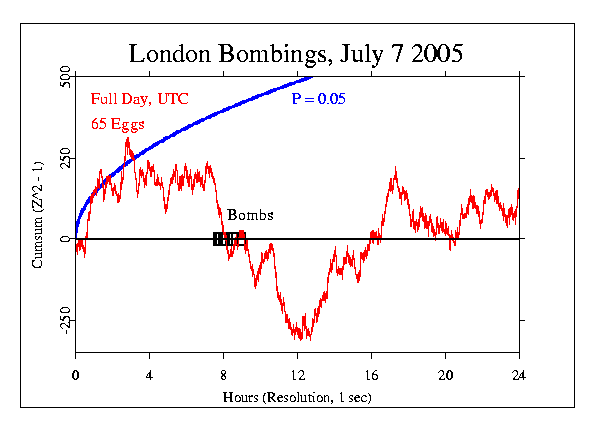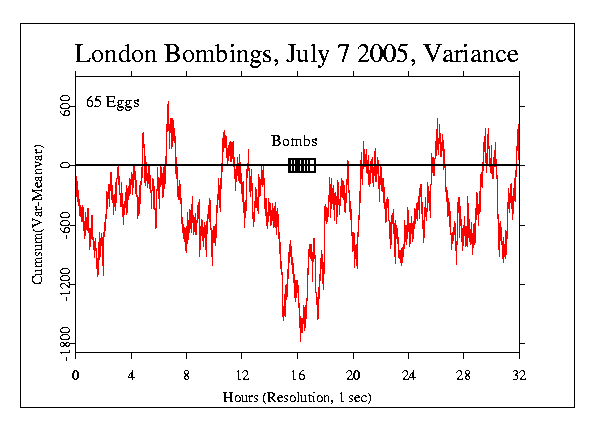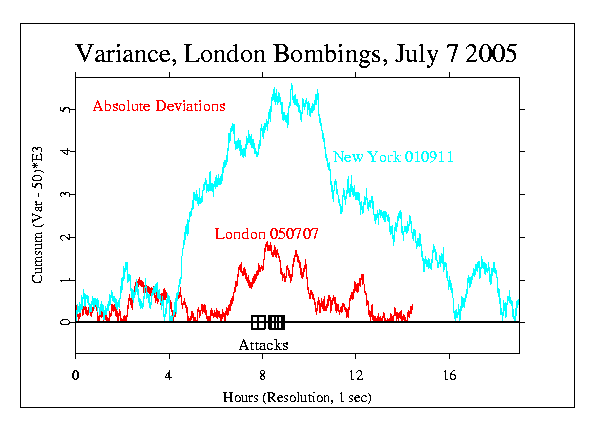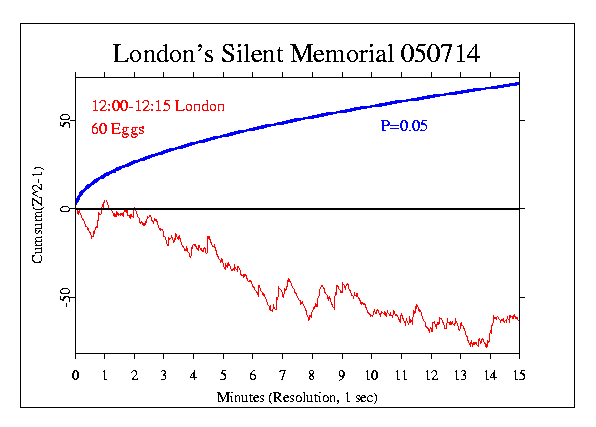London Bombings 050707 |
|
Four explosions ripped across central London on Thursday 7 July, just 20 hours after the euphoric celebration on the 6th of London's winning of the 2012 Olympic bid. The following notes are from a BBC report:
Our specification for the formal analysis was for departure of the Stouffer Z from expectation over the full 24 hour day. (We had used only a 4-hour period for 9/11, and later analysis indicated this was much too short a time.) The first explosion was at 8:51 am (07:51 UTC), and was followed by others at 8:56, 9:17, and 9:47. (This early info has been changed: the three train bombs all exploded at about 8:50; the bus explosion was at 9:47.) The result for this standard analysis does not show a clear deviation, with Z=0.347 and p=0.364. The following figure shows the data. There are interesting internal trends, but it is not clear they are correlated with the bombings.
We learned a great deal from contextual analyses of the data on 9/11, especially of the variance measure across the eggs. The next figure shows this analysis for London. A notable (but only marginally significant) drop in the variance occurs shortly before the first explosion, followed by a return to expected levels a few hours after.
To provide a sense of scale, the absolute value of the accumulating variance deviation on 050707 is compared with the same measure on 010911. The attacks in both cases occurred over a period of one or two hours, and the two data sets are aligned at the beginning of the attacks. The figure is of course only an "aesthetic" presentation, but it is interesting that in both cases there is an apparent symmetry of response, beginning some hours early and persisting after the main focal events.
A week after the terrorist bombing, Prime Minister Tony Blair and Britons nationwide prepared to mark the one-week anniversary of the London bombings with two minutes' silence at noon (1100GMT) and a defiant gathering in Trafalgar Square, says the AP. People across the 25-nation European Union also were being asked to observe the two minutes' silence, EU officials said. Takeoffs and landings were to be kept to a minimum during the two-minute period at Heathrow and Gatwick airports, and no trains were to leave London's main stations during the remembrance, officials said. This memorial moment is very similar in concept and execution to one held for the 9/11 attacks, and it is instructive to compare the EGG network response in the two cases. Both show a very steady decline of the cumulative deviation in the period following the memorial silence. This is not a formal analysis, but the parallel is striking.
|



